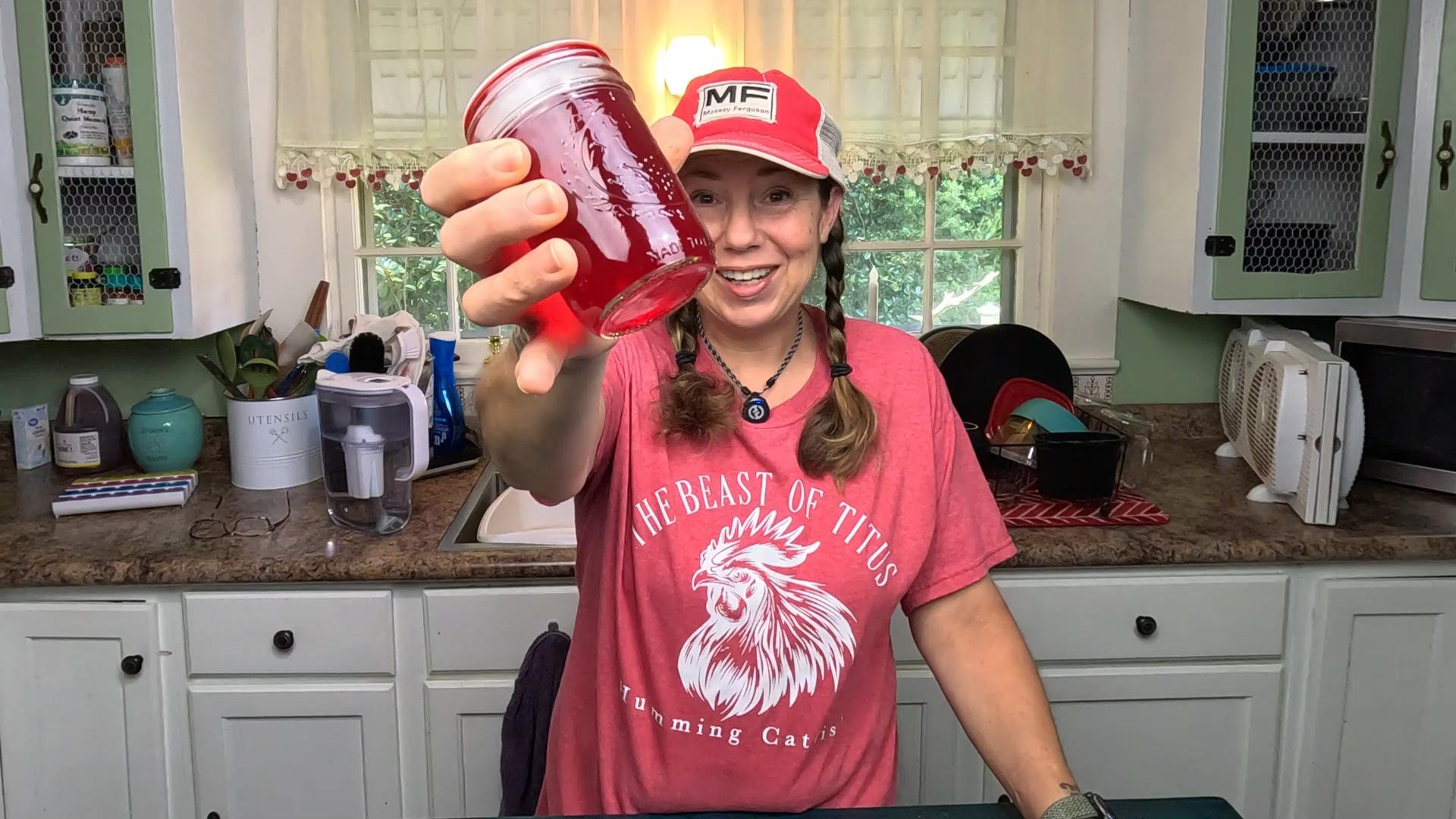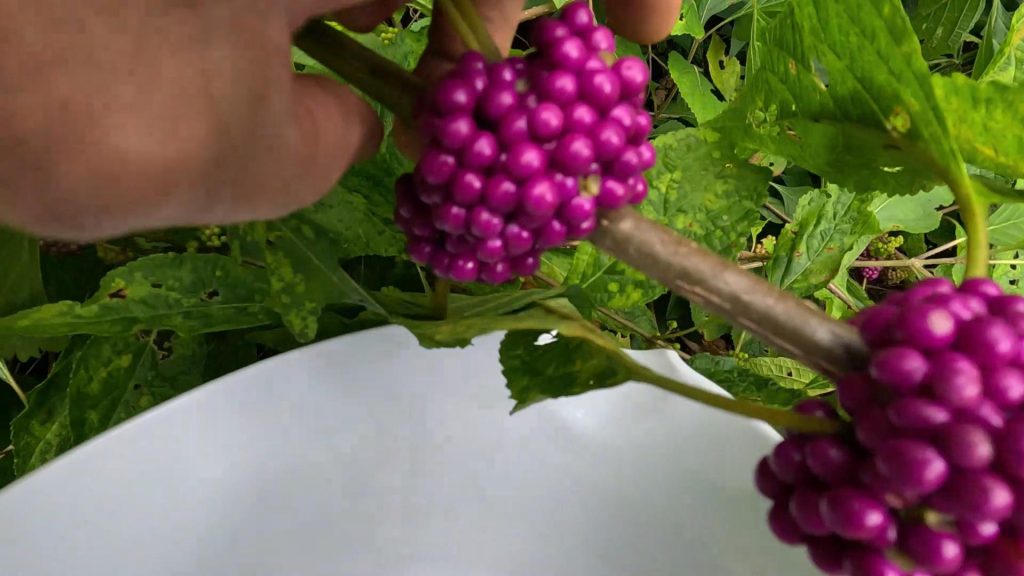
If you’ve ever walked through the woods or at its edges in late summer or early fall here in the South, you’ve probably spotted them — those bright purple berries clustered like jewels around the stem of a green-leafed shrub. That’s American Beautyberry (Callicarpa americana), one of our most striking native plants and a real treasure for both people and wildlife.
If you’d rather watch me make this step by step, here’s the full video:
A Little Backwoods History
Old timers used the beautyberry as both food and medicine. The leaves were crushed and rubbed on the skin to keep mosquitoes away long before we had store-bought bug spray. Some even brewed the roots and bark into teas for fevers and stomach troubles. It’s a plant with a deep history of being both beautiful and useful — a true example of nature pulling double duty.
Why I Harvest Them
For me, beautyberries are a seasonal marker. When the woods start flashing those purple beads, I know fall is on its way. They’re tart and a little astringent raw, but with just a little kitchen magic they turn into one of the prettiest and tastiest jellies you’ll ever see. That jewel-like color carries right over into the jar — it’s like canning up a bit of sunshine mixed with wild woods.
From Berry to Juice
The first step is sorting the berries from the bugs and picking out any excess green. A few green bits are fine, but too many will give the jelly a bitter aftertaste. When rinsing, be careful not to crush the berries — you don’t want to release any juice until it’s in the cooking pot.
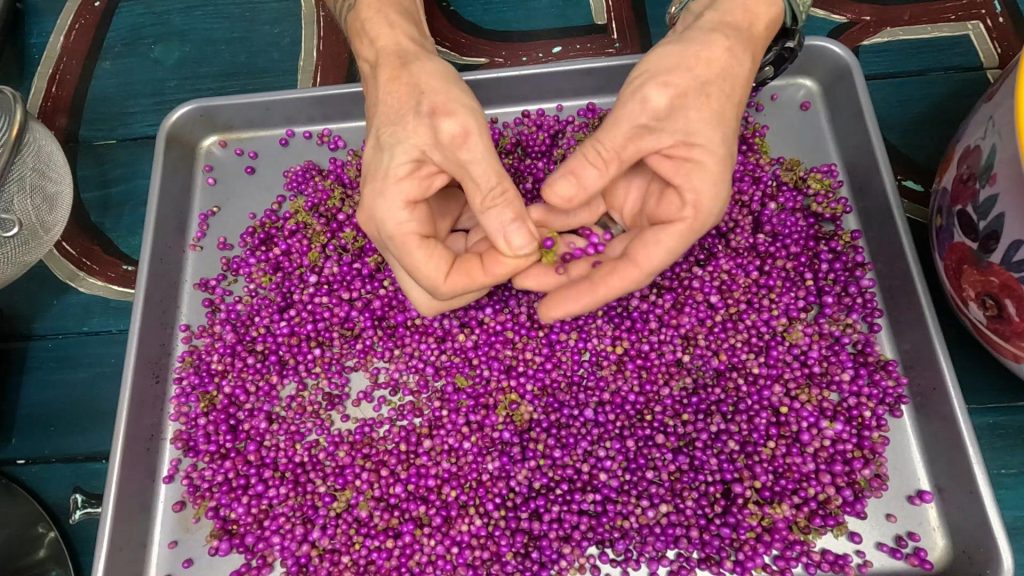
Next, it’s time to make your concentrated juice. I like to keep it simple:
Use a 1:1 ratio of berries to water.
For every 1 cup of beautyberries, add 1 cup of water. Lightly crush the berries in a cooking pot
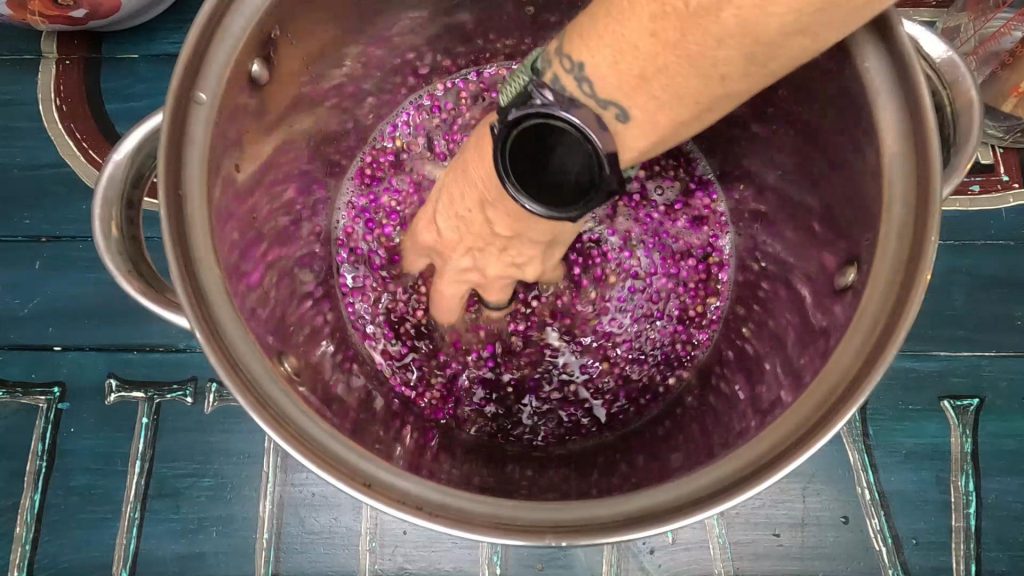
- bring them to a boil, cover, and let them simmer for about 20 minutes.
- Strain through cotton cloth, cheesecloth, or a fine mesh strainer.
*Now, the juice doesn’t look very pretty at this stage, but don’t worry, once you add the pectin, that brilliant magenta color comes right back.
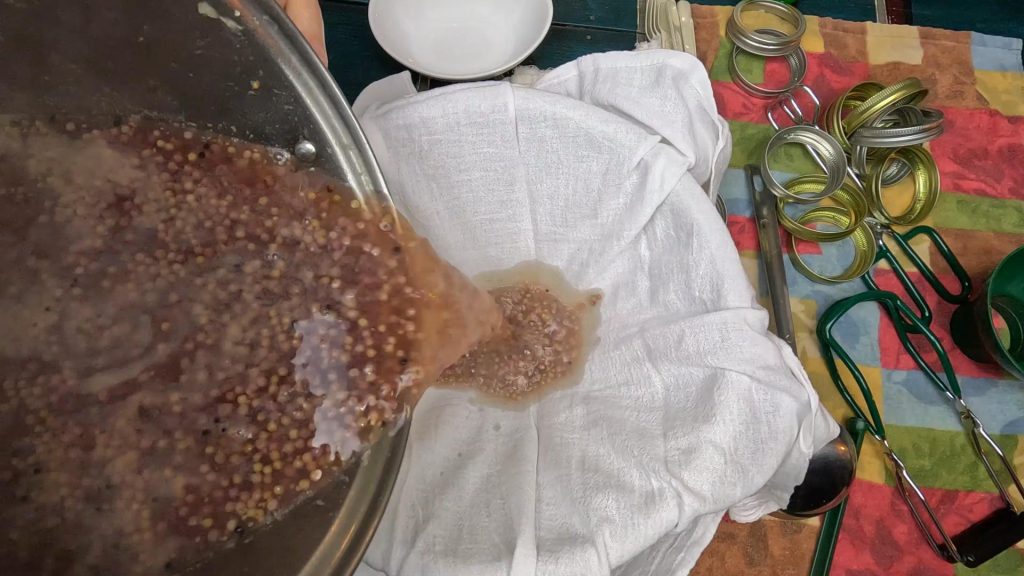
The Jelly Formula
Instead of a set recipe, I use a formula you can scale up or down depending on how much juice you end up with:
For each 1 cup of juice add:
- 1.5 Tbsp pectin
- 0.5–1 Tbsp lemon juice
- 1.25 cups sugar
*Beautyberry is notoriously hard to set, so don’t skimp on the pectin
Bring the juice, pectin, and lemon juice to a boil that can’t be stirred down. Add a teaspoon of butter to reduce foaming (optional but helpful). Then add the sugar all at once and stir continually. Bring it back to a hard boil for 1 full minute.
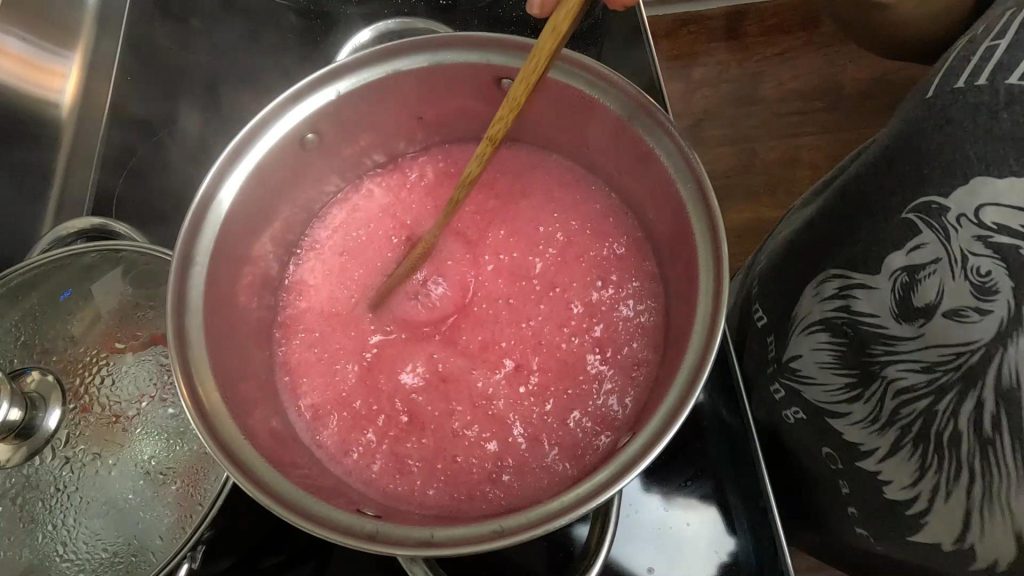
Skim any excess foam that may have formed (this is purely for looks and doesn’t affect the flavor).
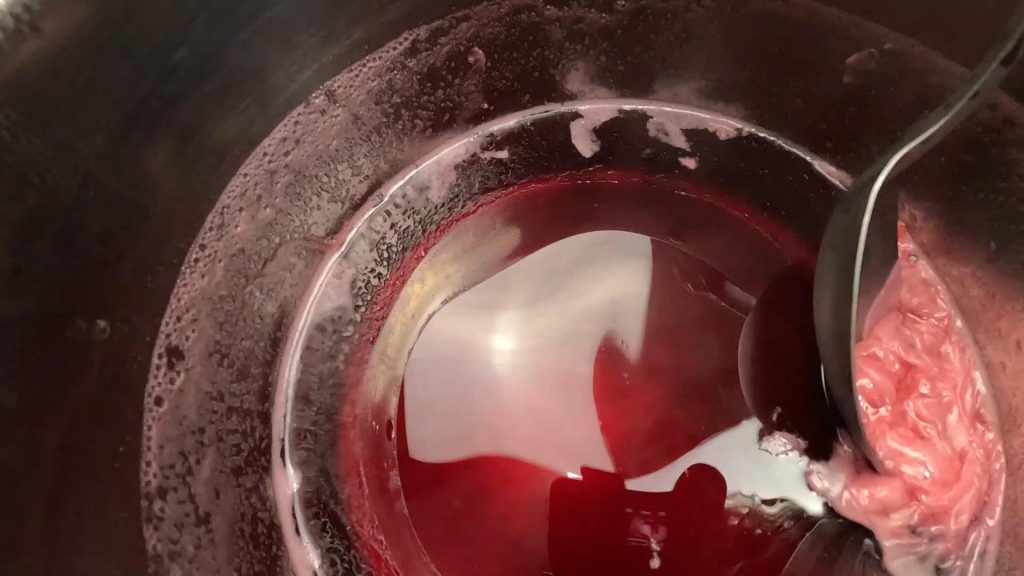
Pour into hot jars, leaving ¼ inch of head space.
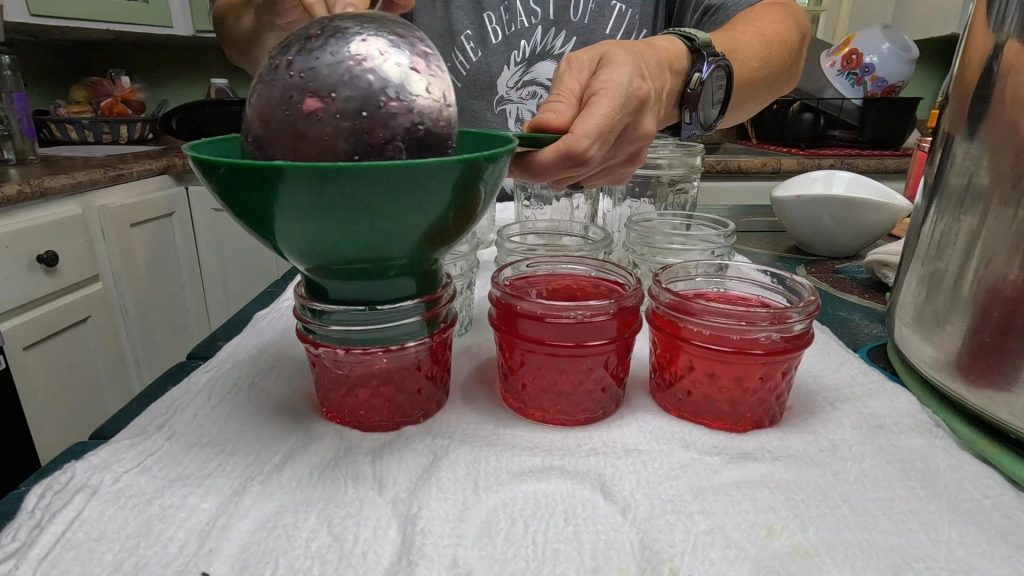
Wipe the rims with diluted vinegar and place the lids and bands on according to the manufacturer’s instructions.
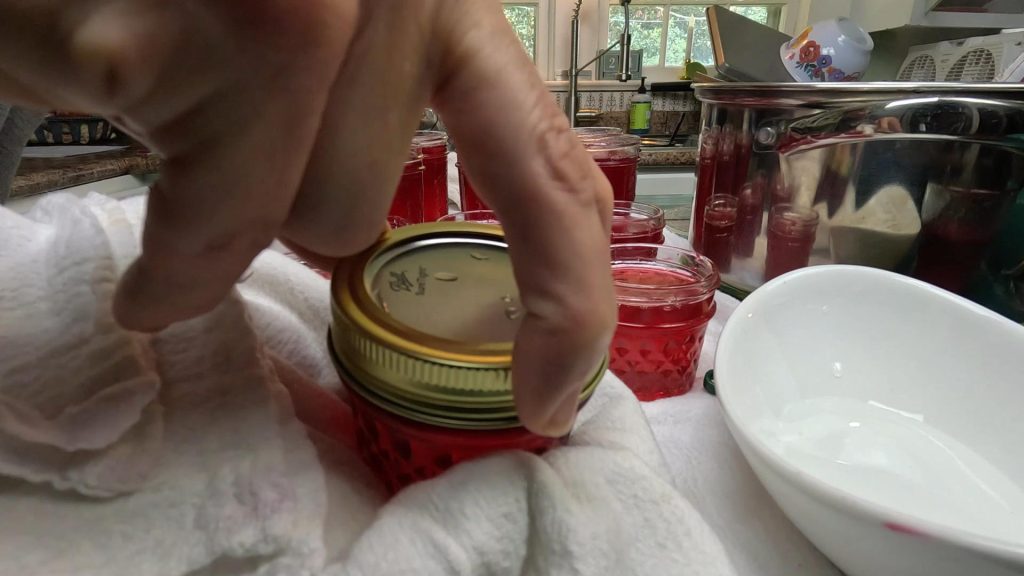
Process in a water bath canner for 10 minutes.
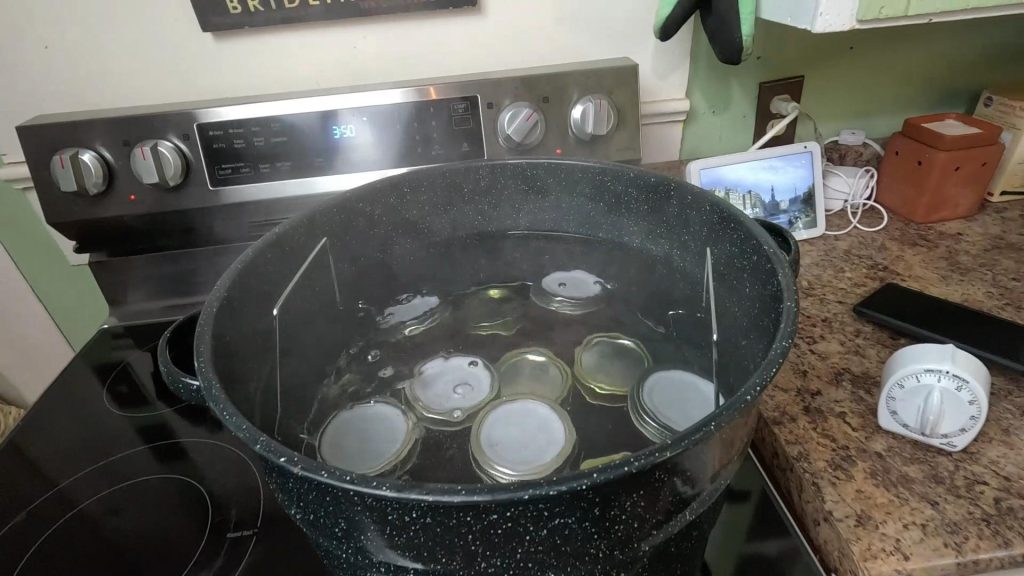
👉 A note on canning supplies: I’ve started using Harvest Guard reusable canning lids. They’re a little different than disposable metal lids, but once you learn the process, they save money and cut down on waste.
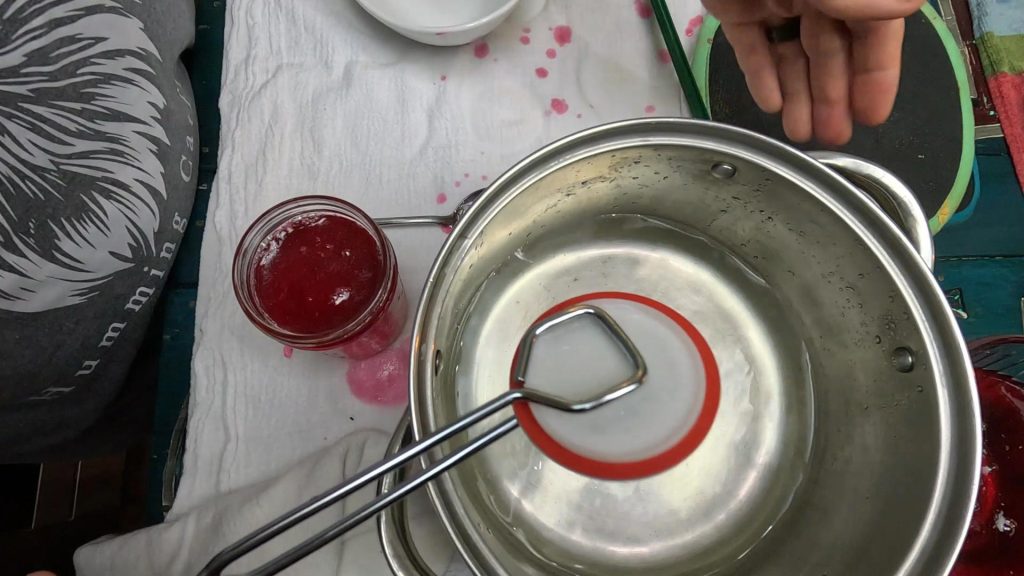
After the 10 minutes, remove the jars from the canner and set them on a towel on a sturdy surface.
*Avoid placing hot jars directly on a cold counter — the sudden temperature change can cause the glass to crack or even explode.
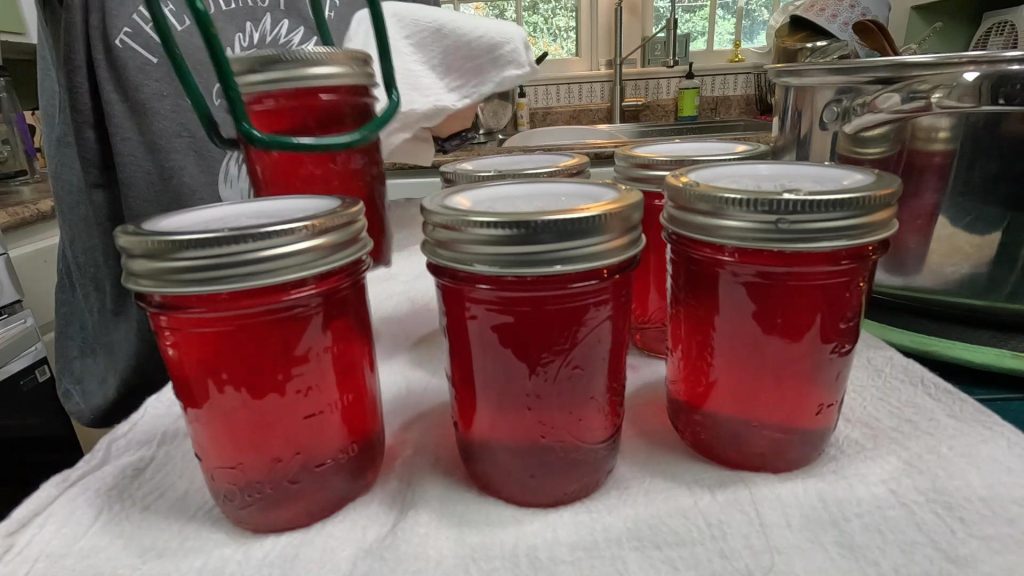
Allow the jars to cool for several hours before moving them. Then check the seals. If any did not seal properly, you can put those jars in the refrigerator to use first, or reprocess them within 24 hours according to your pectin supplier’s instructions (or USDA Extension guidelines).
Don’t be discouraged if your jelly looks a little loose at first — beautyberry jelly, like other wild-fruit jellies, can take up to 24 hours to fully set. Patience is part of the process, and Beautyberry jelly is definitely worth the wait.
More Ways to Use Beautyberries
- Bug repellent: Crush fresh leaves and rub on skin (you’ll smell green and woodsy, but mosquitoes will leave you alone).
- Wildlife food: Birds, deer, and even squirrels rely on beautyberries in the fall, so leave some for them.
- Decorative cuttings: A sprig of beautyberry in a fall bouquet is stunning.
Closing Thoughts
Beautyberries remind me that sometimes the brightest treasures are found in the simplest corners of nature. They’re one of the first heralds of cooler weather, and that alone can bring a smile. Next time you see that flash of purple, maybe gather a basketful and try your hand at jelly.
Affiliate Disclosure:
Some of the links below are affiliate links. If you use them, I may earn a small commission at no extra cost to you. It helps me keep Humming Catfish going — so thank you!
🌿 Products I Used:
Harvest Guard Reusable Canning Lids
